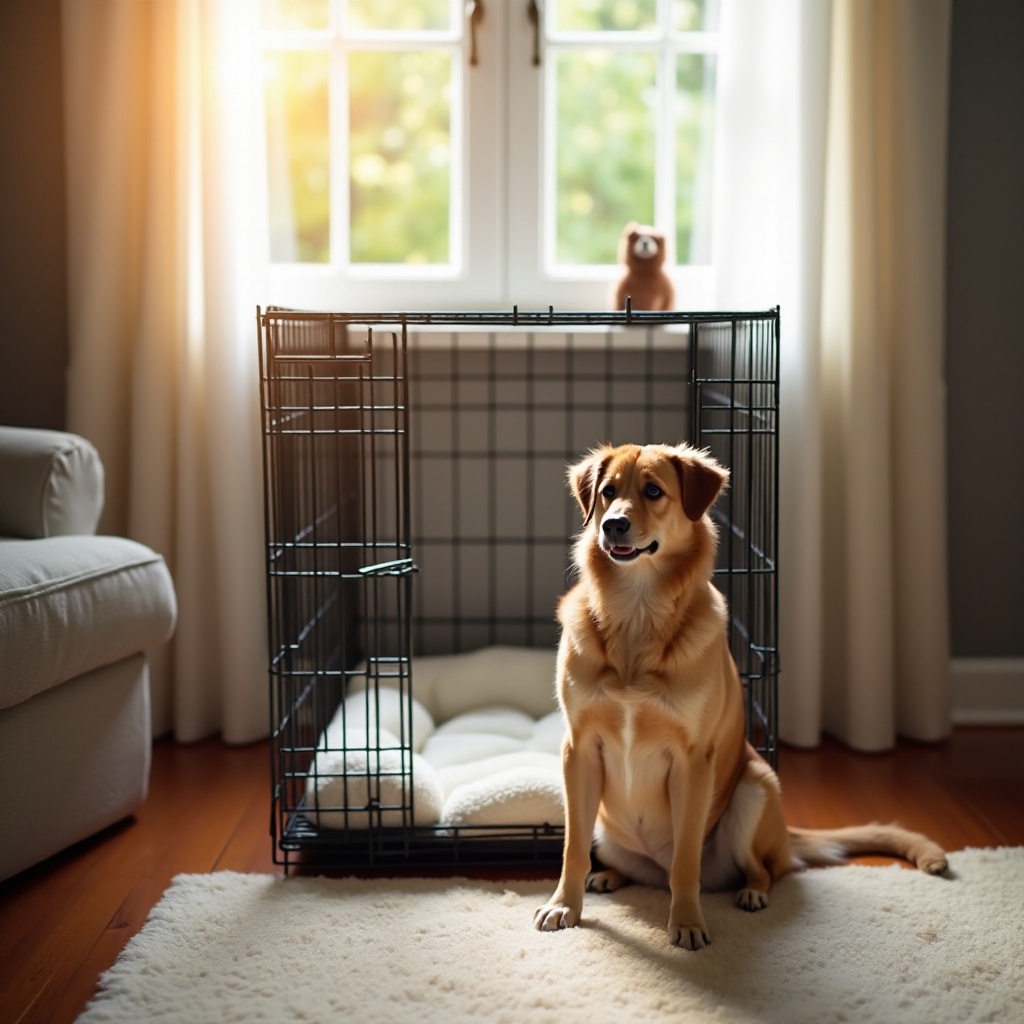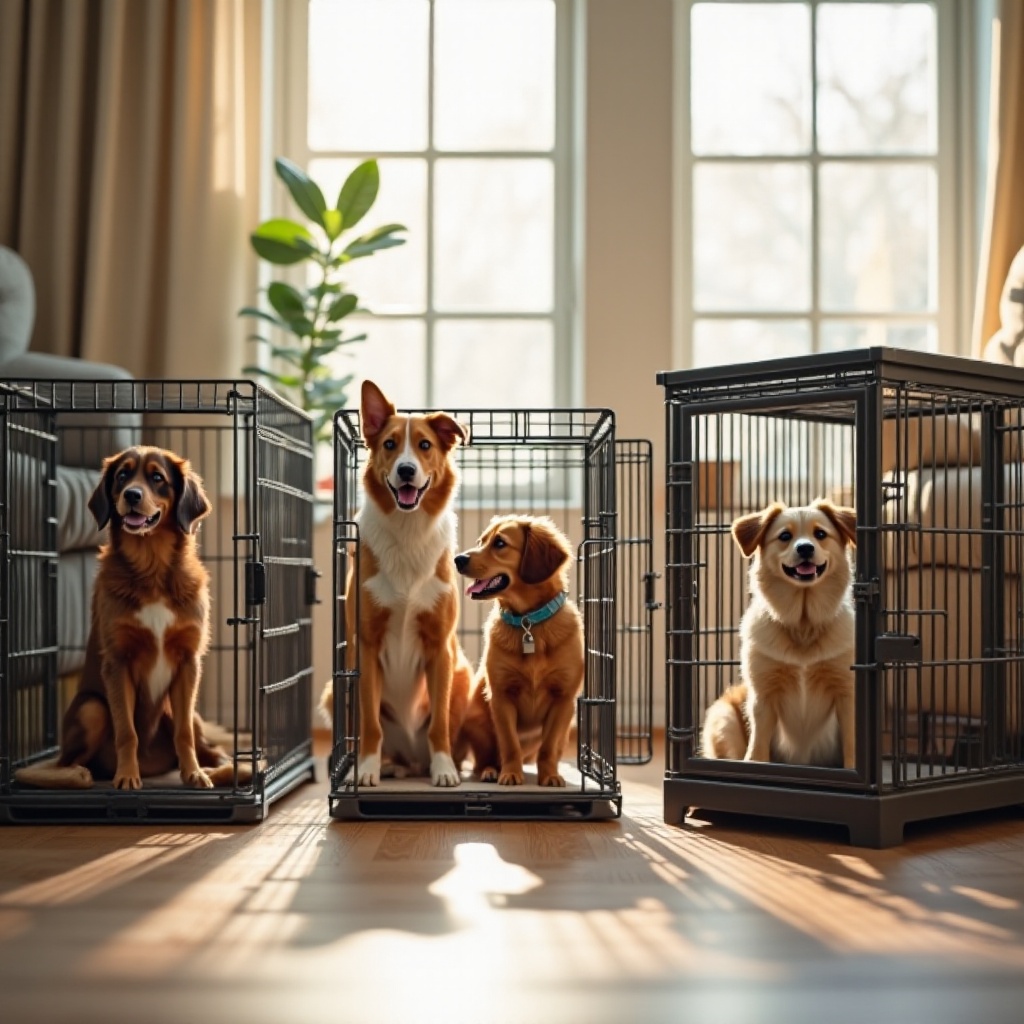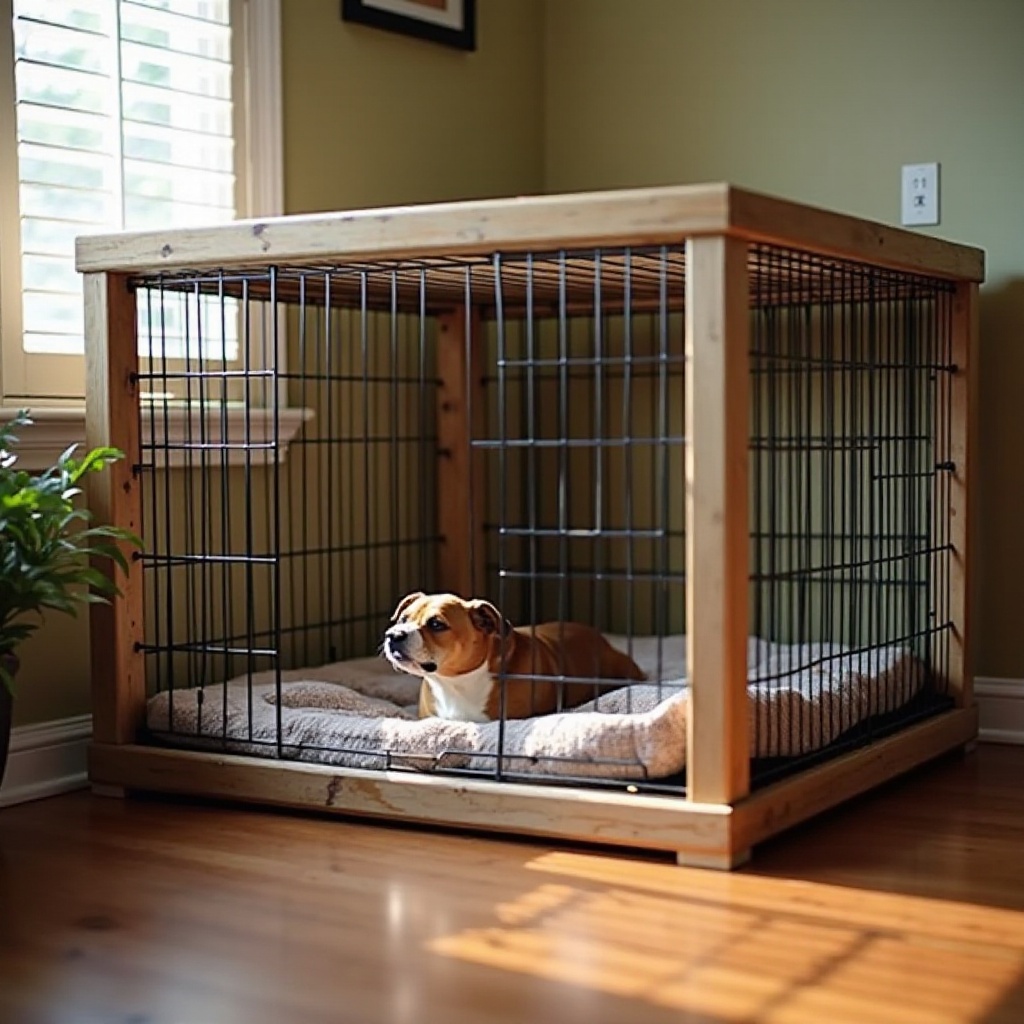Introduction
Choosing the right crate size for your dog is essential for training, travel, and creating a comfortable den at home. Too small, and your dog will be cramped; too large, and the den-like security is lost. This guide explains how to measure your dog, factors to consider, and tips for crate training, covering everything you need to know about selecting the perfect dog crate size.

Understanding Your Dog’s Size
A crucial first step in choosing the right crate is understanding your dog’s size. This involves both the actual measurements of your dog and considerations of its breed and growth potential.
Measuring Your Dog
Start by measuring your dog’s length from the tip of the nose to the base of the tail. Add 2-4 inches to this measurement to ensure enough space for movement. Next, measure the height from the floor to the top of the head or ears, whichever is higher, while your dog is sitting. Again, add 2-4 inches to this vertical measurement for comfort.
Considering Breed and Growth Potential
Breed plays a significant role in determining the appropriate crate size. Larger breeds, like Great Danes, require more space than smaller breeds, like Chihuahuas. Consider your dog’s growth stage as well. If you have a puppy, think about its adult size. Puppies grow rapidly, so it is often practical to buy a larger crate and use a divider to adjust the space as they grow.
Different Factors to Consider
When deciding on a crate, it is vital to consider various factors beyond just size.
Crate Purposes: Training, Travel, Home
Different crate purposes can influence your choice. For training, a sturdy and easy-to-clean crate is essential. Travel crates should be lightweight, secure, and easy to transport. For home use, consider well-ventilated and comfortable options that blend with your home decor.
Types and Sizes of Crates
Crates come in several types, including wire, plastic, soft-sided, and heavy-duty. Wire crates offer excellent visibility and airflow; plastic crates provide a den-like environment; soft-sided crates are great for travel; and heavy-duty crates cater to strong, determined dogs. Knowing the type of crate suitable for your needs will help in selecting the perfect size.

Choosing the Correct Crate Size
Selecting the correct crate size is about balancing the need for space to move freely with a sense of security for your dog.
Ideal Crate Dimensions
The ideal crate dimensions should ensure your dog can stand up, turn around, and lie down comfortably. A good rule of thumb is to add 2-4 inches to your dog’s measurements. For example, if your dog is 20 inches long and 15 inches tall, a crate measuring approximately 24 inches long and 19 inches tall would be suitable.
Space Considerations: Movement vs. Security
While it’s crucial for your dog to have enough space to move, excessive space can reduce the den-like security that crates provide. Dogs seek small, secure areas for comfort and safety, so avoid overly large crates.
Practical Examples for Various Dog Sizes
- Small Dogs (Chihuahuas, Dachshunds): A crate size around 24′ x 18′ should suffice.
- Medium Dogs (Beagles, Cocker Spaniels): Look for crates approximately 30′ x 21′.
- Large Dogs (Labradors, Golden Retrievers): Consider crates that measure around 42′ x 28′.
- Extra-Large Dogs (Great Danes, Mastiffs): Crates 48′ x 30′ or larger.
Adding Accessories for Comfort
To ensure your dog loves its crate, adding a few accessories can create a more comfortable space.
Bedding and Padding
Soft bedding and padding can add comfort to the crate. Make sure to choose materials that are easy to clean and match your dog’s comfort preferences.
Toys and Attachments
Including toys can keep your dog entertained and reduce anxiety while in the crate. Attachments like water bottles are also helpful for keeping your dog hydrated.
Dividers for Puppies
For growing puppies, use crate dividers. These allow you to provide a snug space without buying multiple crates as they grow. Adjust the divider as your puppy increases in size.
Tips on Crate Training
Proper crate training can turn a crate into a safe haven for your dog.
Introducing Your Dog to the Crate
Start by making the crate inviting. Place treats, toys, or a favorite blanket inside, and let your dog explore it while the door is open. Gradually increase the time they spend inside.
Making the Crate Comfortable
Ensure the crate is comfortable with bedding and a water source. Never use the crate as a punishment; it should always be a positive space.
Common Mistakes to Avoid
- Avoid leaving your dog in the crate for too long.
- Never force your dog into the crate.
- Keep the crate door open initially to ease them into it.

Safety and Maintenance Tips
For a safe and pleasant crating experience, follow these safety and maintenance strategies.
Proper Ventilation
Ensure there are plenty of air holes for ventilation. This prevents overheating and helps keep the environment fresh.
Regular Cleaning and Maintenance
Regularly clean the crate. Remove bedding and wash it, and wipe down surfaces with pet-safe cleaners to prevent odors and bacteria buildup.
Ideal Crate Placement
Place the crate in a quiet but not isolated area. Your dog should feel part of the family activities, reducing any feelings of loneliness.
Conclusion
Choosing the right crate size for your dog involves careful consideration of their size, breed, purposes, and comfort needs. By following the steps outlined in this guide, you can ensure your dog’s crate becomes a safe and enjoyable space.
Frequently Asked Questions
How do I know if the crate is too small for my dog?
If your dog cannot stand up, turn around, or lie down comfortably, the crate is too small.
Can I use the same crate as my dog grows?
Yes, using dividers in larger crates can accommodate your growing puppy.
What if my dog doesn’t like the crate?
Ensure the crate is comfortable, introduce it slowly, and avoid using it as punishment. Persistence and positive reinforcement can help.
